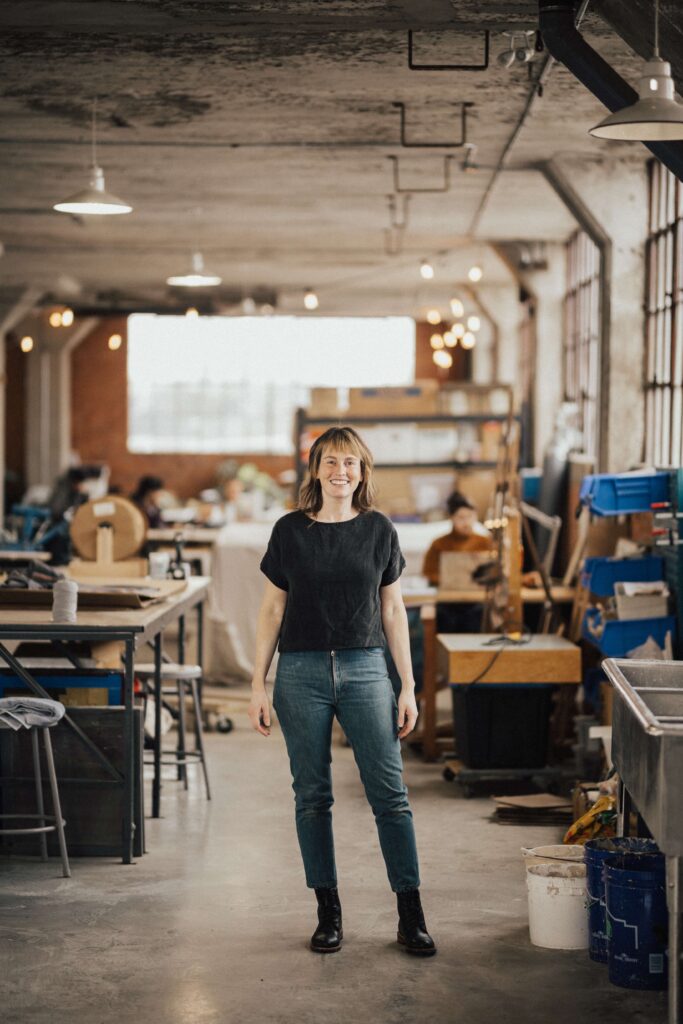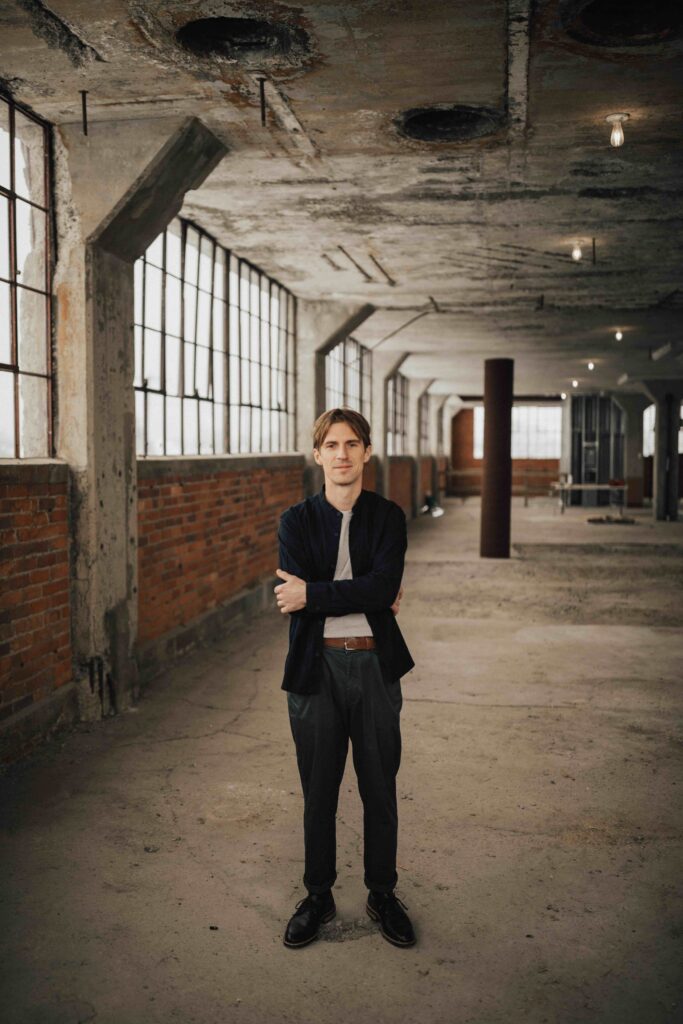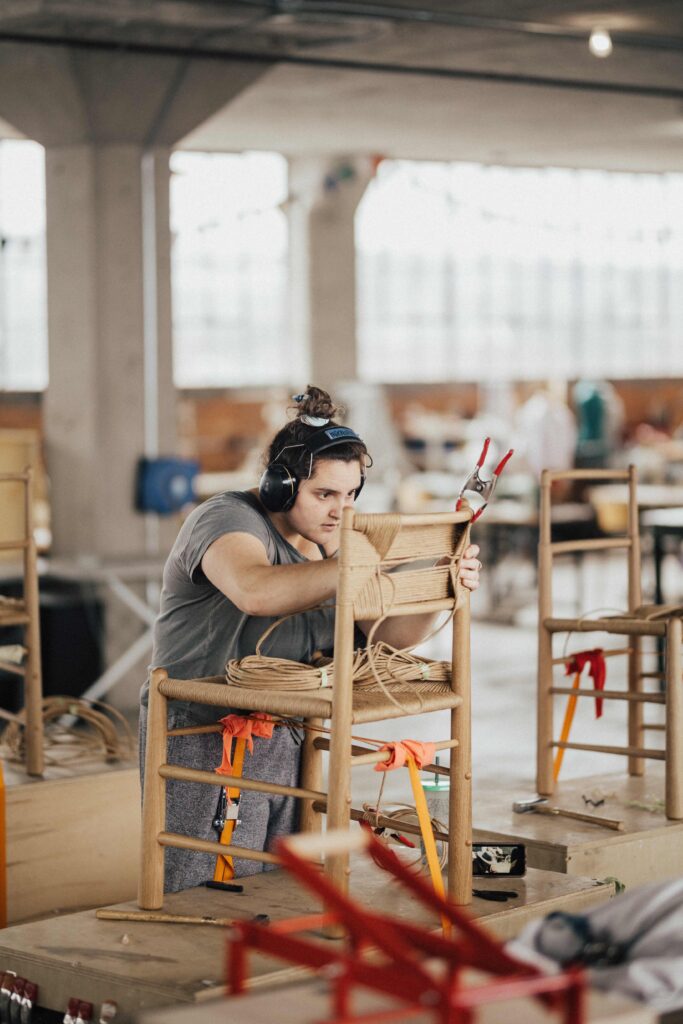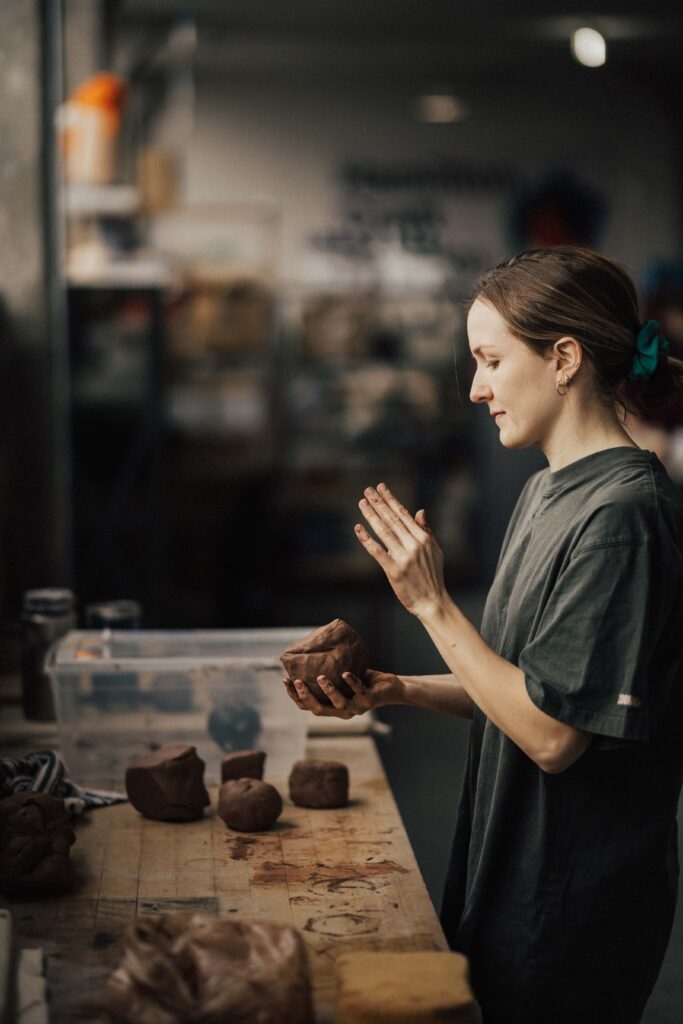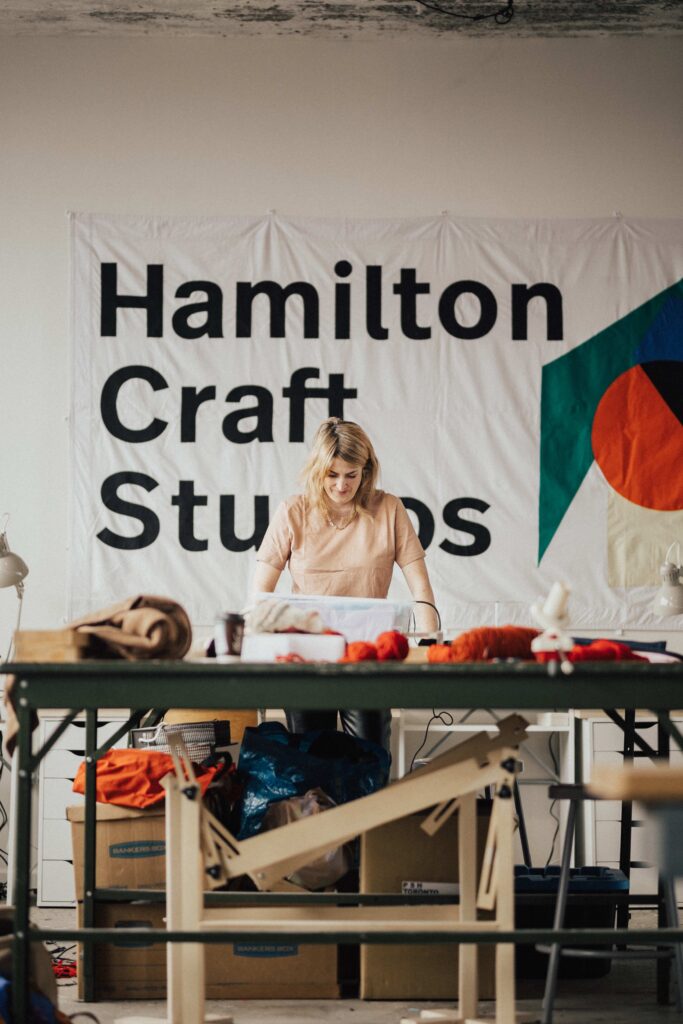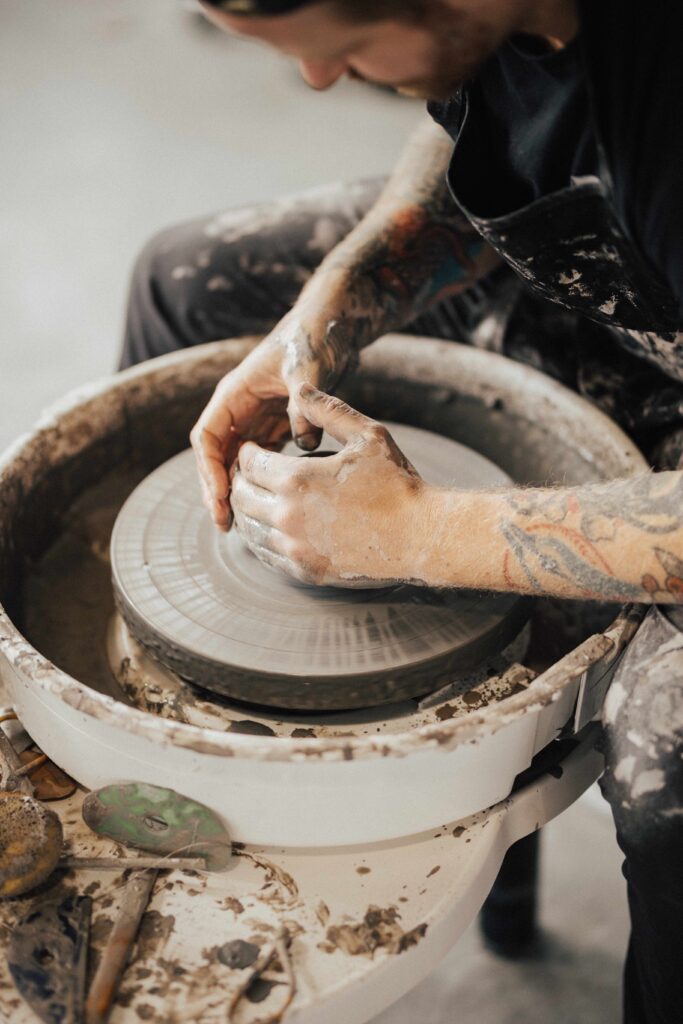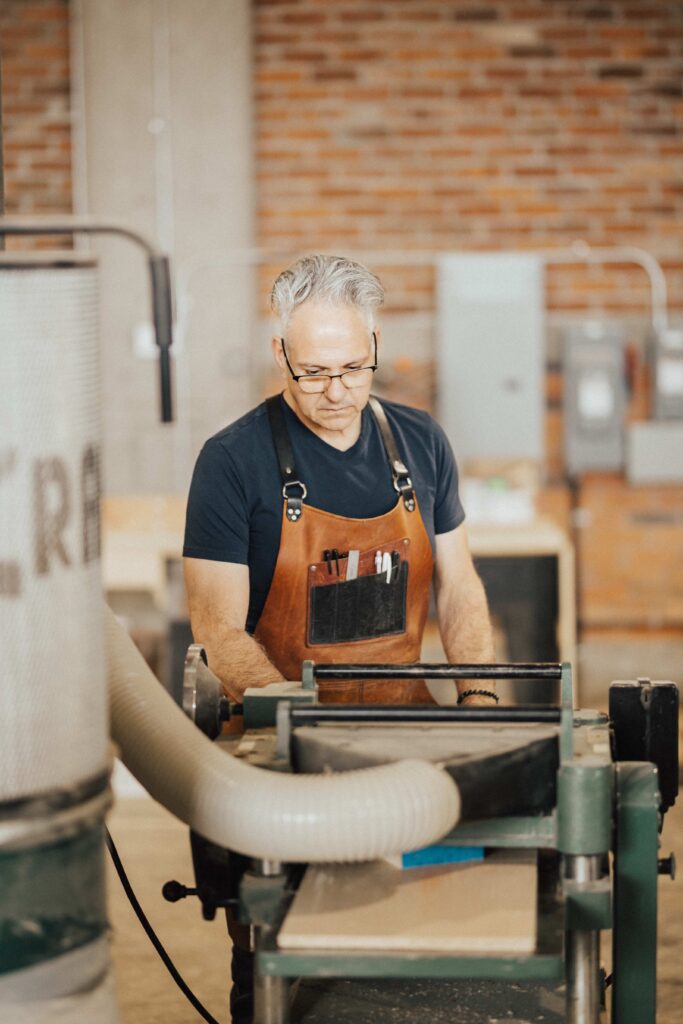Crafting a creative hub
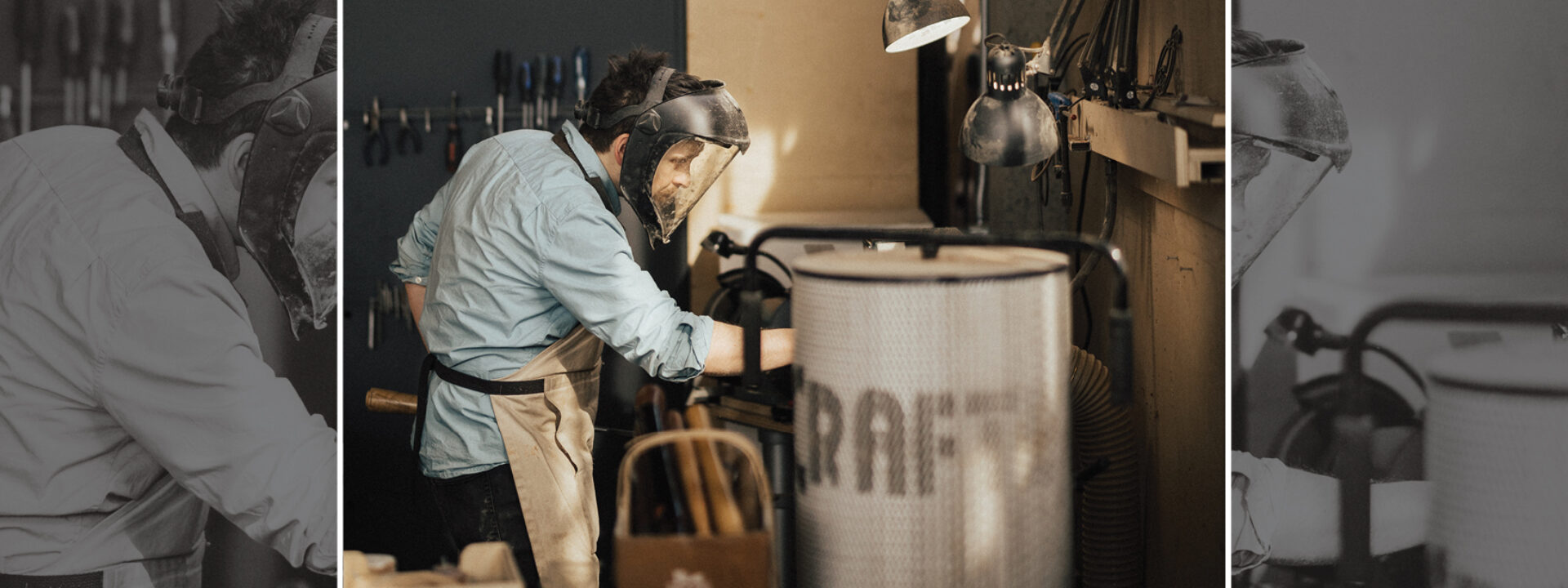
Hamilton Craft Studios offers an affordable and fun space to artists, along with woodworking, textiles and ceramics classes, in a sprawling former 1920s-era wire factory.
Dayna Gedney and Joseph Bauman tripped over the former wire factory at 121 Princess St. during an online property search. Both graduates of Sheridan College’s furniture craft and design program prior to moving to Hamilton in 2014, the couple had hatched a business plan during the pause of the pandemic. That factory was the spark the idea needed to ignite.
A fellow Sheridan-trained woodworker, Jake Whillans, was next to join their team after an enthusiastic six-hour phone call with Bauman. Whillans had previously worked out of a Mimico shop that was structured as a cooperative, but which he describes as “15 indie businesses in silos.” He wanted a different kind of space, one that would break away from the trope of “the angry, disgruntled woodworking shop.”
The group signed a lease for that hollowed-out factory with the rare benefit of a great landlord who prefers creative space over condos. With the addition of Matt MacDonald as a fourth woodworker and director, the founders of Hamilton Craft Studios got to work transforming a literal blank slate of bare concrete floors, adding everything from electricity to washrooms and enough equipment to fill what would become a 14,000-square-foot craft studio.
A sprawling woodworking studio on the second floor was first to open in May 2022. Rather than risk losing access to its potential, HCS swiftly claimed the third floor to support textiles, upholstery, and ceramics, as well as a fridge and coffee maker. “It’s the only way to get the woodworkers up here,” Gedney jokes. The top floor opened in mid-September and a fifth director, David Scola, rounded out their team in November.
Gedney assumed administrative leadership of HCS by its second week when the inevitable management tasks began to pile up. Now serving as executive director, she oversees the complexities of this dynamic new space with a cheerful ferocity: sourcing equipment and materials from wholesalers, inducting new members, and programming classes alongside a team of artists gathering within the walls.
Among the first to set up shop was Zoë Pinnell, who had moved to Toronto for a residency after graduating from Sheridan’s ceramics program but found the city lacking in career support – particularly during a pandemic. Early Instagram posts from HCS inspired her to cold-call Gedney with an offer to help set up the studio’s ceramics facilities. She arrived while the third floor was empty save for moving boxes and has become one of its most active artists. In addition to providing technical support for ceramics, Pinnell joined Pippa Samsworth as one of the studio’s first instructors when classes began last fall, and she has been recruiting artists to the space during shifts at The Cannon coffee shop.
Like Pinnell, Curtis Mohrhardt found HCS via Instagram after struggling with a 100-square-foot share of a rented shop in Mississauga. Will Barton joined the studio five days after his first phone call, eager to escape a backyard workspace that required him to move his lawnmower every time he needed to cut into a sheet of plywood. By contrast, the HCS woodworking shop boasts professional equipment and plenty of elbow room in a safely ventilated, sunlit space that is also proving to be a conduit to paid work for its artists.
In less than a year, HCS has attracted 52 members, ranging from hobbyists to full-time artists. While membership provides its benefits, the studio prides itself on being open to newcomers. A noteworthy feature here is the absence of any walls beyond the glass and brick envelope of the building itself. The lack of private studios is a deliberate choice, “and not just because the fire marshall said so,” says Gedney. By sharing tables and tools in common, each artist becomes mindful of the needs of others, and enters into casual chatter that can solve problems and fuel creativity.
So far, HCS has primarily attracted makers outside of Hamilton who are drawn by affordable facilities and friendly faces that can be hard to find in a new city as a mid-career artist. But Hamiltonians are showing up in classes and recognizing what this space has to offer, as both a facility and an example to artists seeking more agency over their creative careers. Outreach programs with Hamilton Public Library, school field trips and art camps for local children are all helping HCS find its footing in Hamilton while sustaining the studio and its members with paid work.
Most artists cannot live on the short hours of contract teaching alone, but Gedney envisions a wider range of activities that can support their independent makers. HCS is planning its first holiday market for Dec. 8 and 9 – the beginning of an annual tradition that pushes the studio doors wider open and supports its self-sufficiency.
A growing social calendar is building kinship among studio members and offering ports of entry for new artists, such as their monthly queer craft club, and a fibre arts brunch. With new makers bringing further skills to share, HCS is always adapting to anticipate the needs of its future community and will undoubtedly be shaped by the energies of its incoming artists as much as its founders.
Gedney recalls a recent studio clean-up that ended with a backyard barbecue and a game of cornhole using bean bags and boards made on-site that day. It was a rare opportunity for her to set aside her administrative duties and take joy in the community she has cultivated – one where, as she says, “the more you give, the more you get out of it.”








